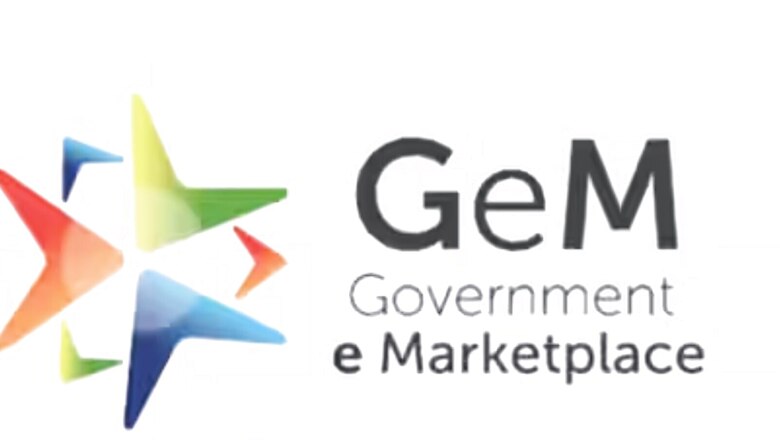
views
The Ministry of Commerce and Industry has proposed to create a mobile app for both Android and iOS devices for the Government e-Marketplace (GeM) to show the technical requirements for Managed Service Provider (MSP). The GeM serves as a one-stop shop for online procurement of common goods and services.
The ministry stated in the proposal draft that the app should have reporting features. It needs to include dashboards, etc. as per alignment with GeM during the design phase.
Volume 1 Section 5 of the Request for Proposal (RFP) states: “The Scope of Work for the MSP is to design, develop, implement, operate and maintain the GeM System for Directorate General of Supplies & Disposal (DGS&D).”
However, the ministry in the second version of the RFP highlighted that the app must have real-time alerts and notifications against certain events such as new bids created, progress milestones status and others.
It is also said that there should be application notifications-based user authentication for various purposes such as registration, log in, bid creation, bid submission, and so on.
As per the ministry, in addition to the mobile app, the MSP must create a web app for the GeM Portal that can be accessed via smartphones or tablets. Furthermore, it needs to develop online functionality to enable GeM to perform Aadhaar-based e-KYC, electronic signature, and digital signing of documents or data in the role of Certifying Authority.
It is also noted in the draft: “Module for user management of procurement officials needs to be developed. Each Buyer (Ministry/Department/PSU/etc.) will manage its users through a nominated administrator(s) who will have limited admin rights over the user management module for creation, deletion, modification, transfer, etc. of the users for the respective Ministry/Department/PSU/etc.”
Additionally, the GeM Solution has to be integrated with various entities such as payment gateways, banks, UIDAI, GSTN, and ITD, credit rating agencies, the Ministry of Corporate Affairs, CPSEs, PFMS, IFMS of States, lending agencies, and others.
As per the draft, the MSP would be in charge of identifying obsolete data on the current GeM platform and archiving it under the policy, while GeM will own the application software developed for the project, including the source code and all project-related documentation.
The MSP should be responsible for keeping proper project documentation in a structured repository with proper version control, the draft added.
Moreover, it stated that each phase of application development and implementation for the GeM System needs to follow a few steps which include:
- Requirements gathering: A detailed assessment of the business and IT solution requirements, carry out exhaustive requirements gathering exercises with the GeM team, develop and follow standardized templates for capturing requirements and system documentation, maintain a traceability matrix from the Software Requirements Specification stage and obtain the required signoffs from user groups formed by the GeM.
- Analysis and design: Building the solution in compliance with the requirements, complying with the Solution Architecture principles and other details and modification of the architectural, cloud and sizing guidelines with mutual agreement between GeM and MSP.
- API’s management and usage: Data exchange between the GeM System and other internal/external systems will preferably take place via APIs, as well as setting up, operationalizing and maintaining a system for APIs by MSP.
- Overall development, commissioning, configuration, and implementation methodology: Consideration of the scope of work, develop, commission, configure and implement a solution that meets the GeM System’s requirements by MSP and continuous GeM participation to ensure that any concerns and issues are identified early in the Software Development Lifecycle.
- Application requirements, specifications and business analysis: Activities associated with process standards, which include coding standards, naming conventions, user interface standards and interfaces standards. Development of process to meet application standards and other technology standards.
- Application solution design: Producing design specifications, the technical design, formal estimates of the scope and work for application build, and the production of documentation required for phase completion, as well as approval that meet GeM’s standards, identifying and describing the most cost-effective solution to the implementation option under consideration.
- Application build and configuration services: It includes building, execution, unit testing, formal estimates of the scope and work for the QA Services following the build, and production of documentation for phase completion and approval. The application software must be based on responsive web design principles and user-friendly. MSP will be responsible for supplying all the required licenses of the application and related software products as well as subsequent installation. Any exceptions to licence terms and conditions must be reported to the GeM at the appropriate time.
- Testing or quality assurance: The MSP needs to provide the testing strategy, including the traceability matrix and relevant test cases, and should also test the various components of the software developed or customized, as well as the overall solution. Testing should be comprehensive and performed at all stages of development and implementation.
Read all the Latest News India and Breaking News here
















Comments
0 comment